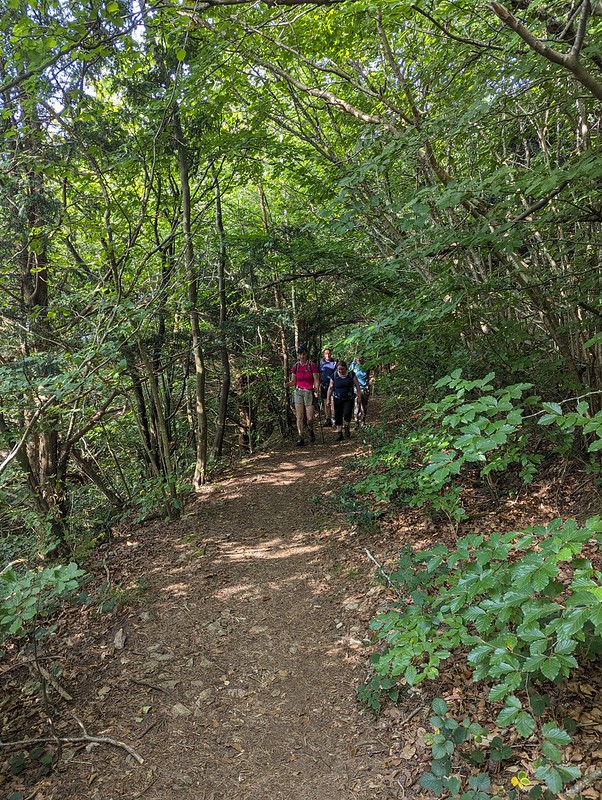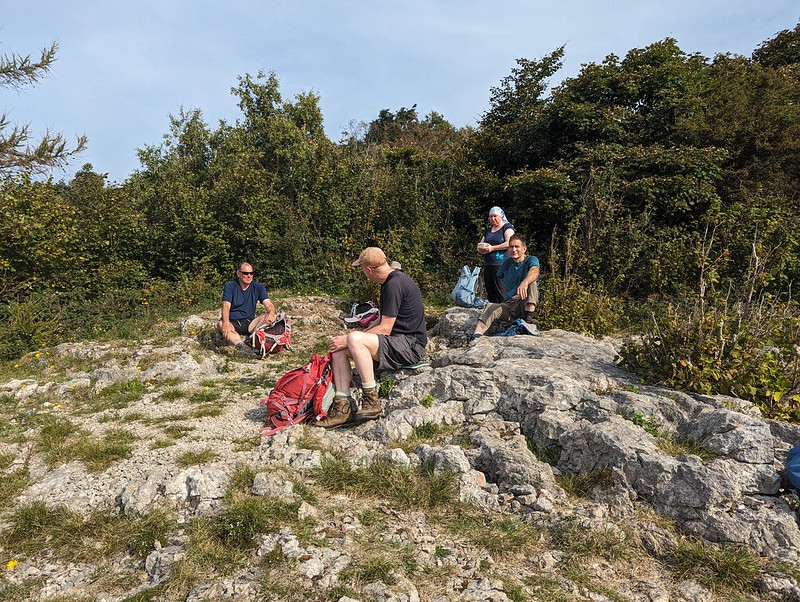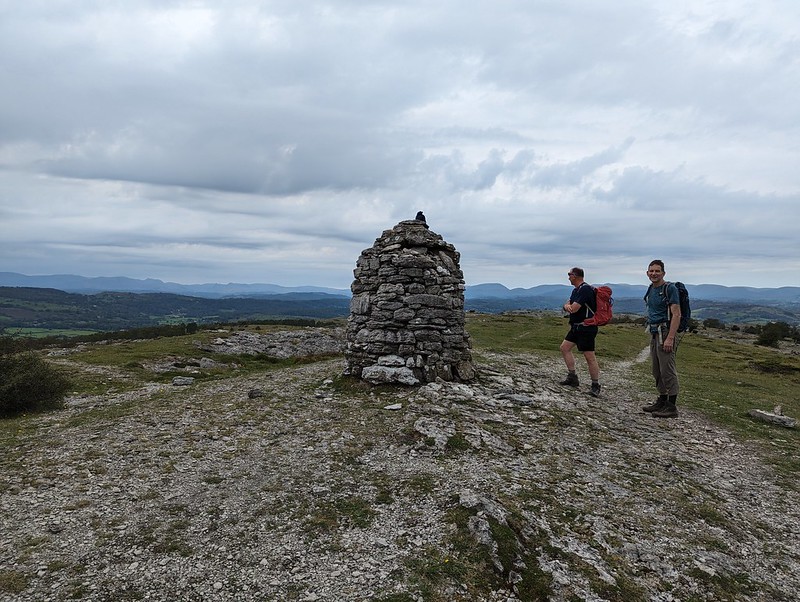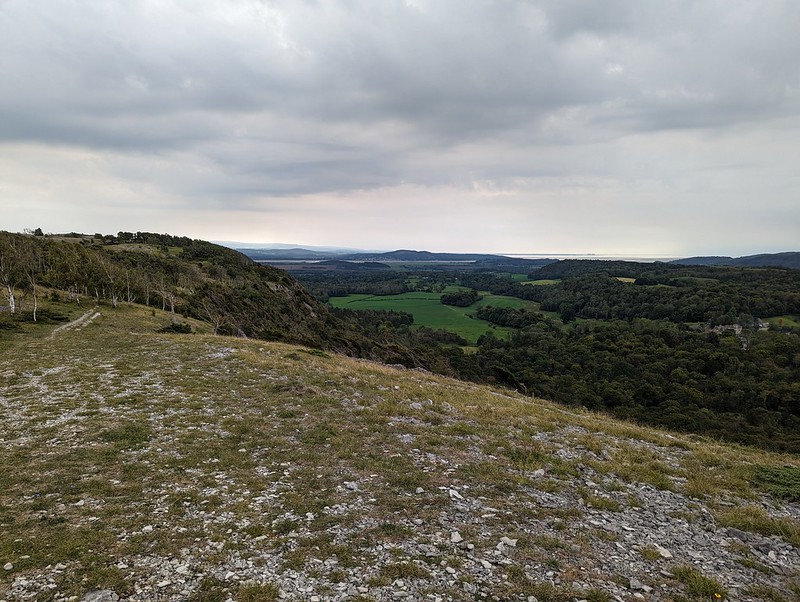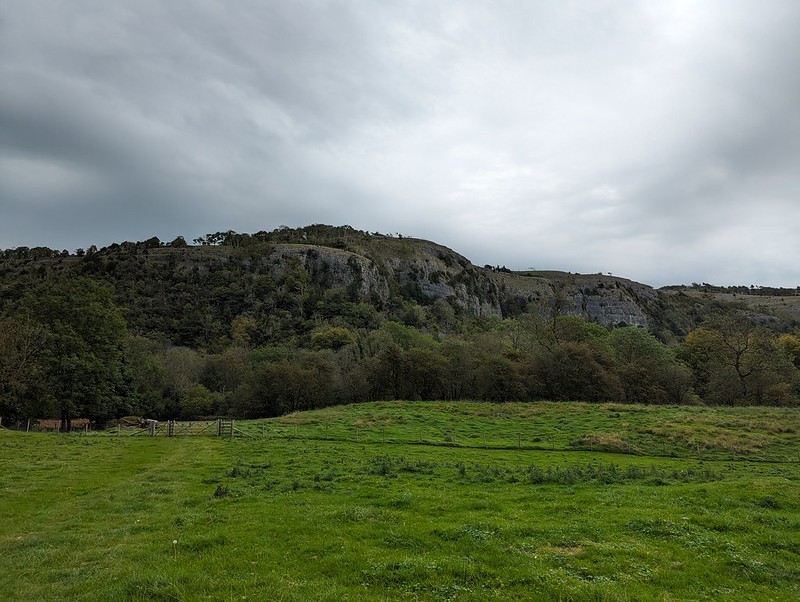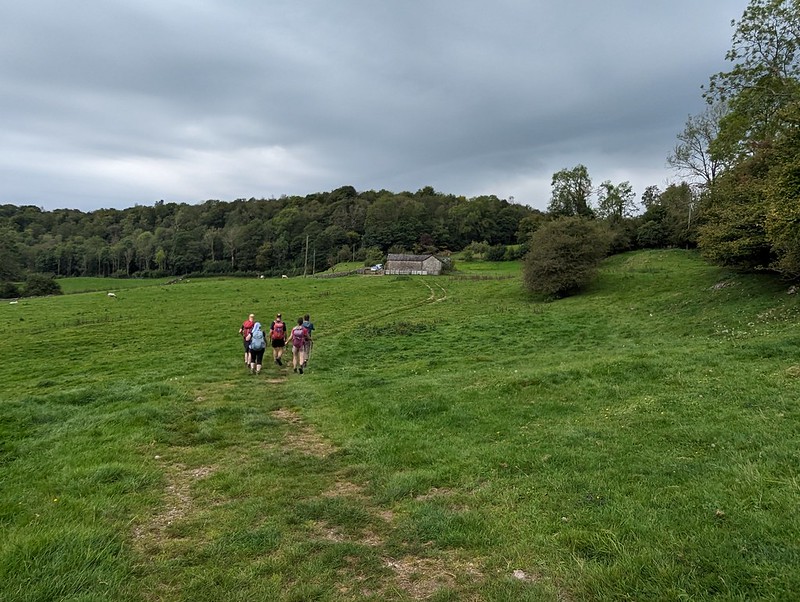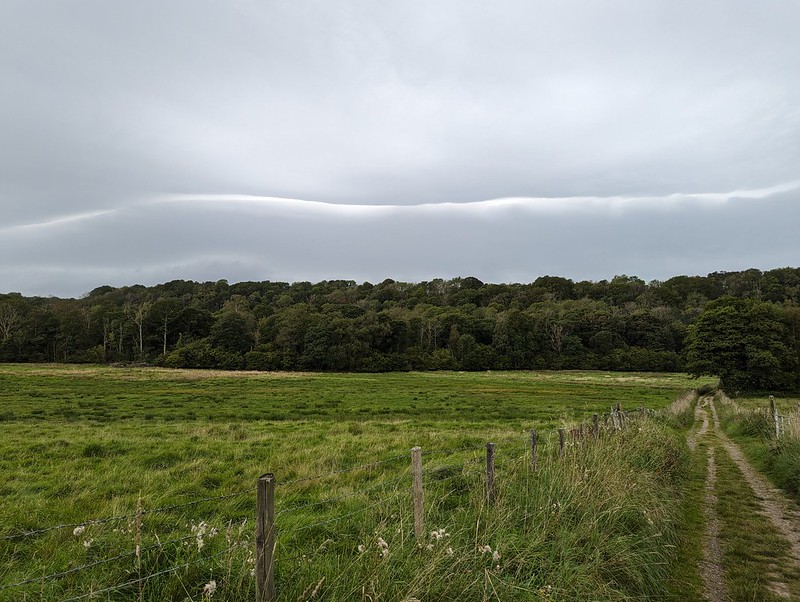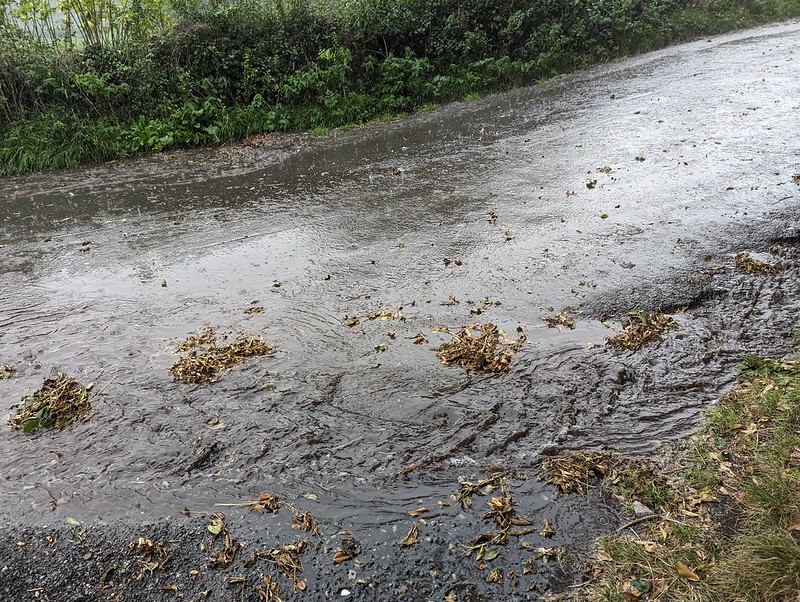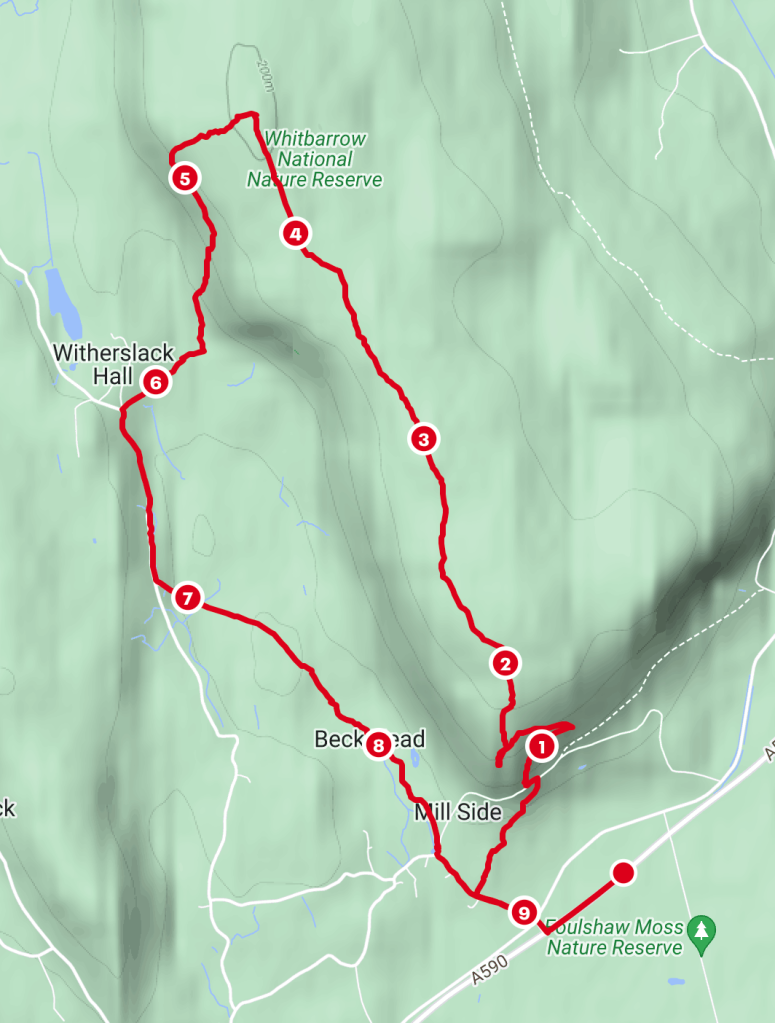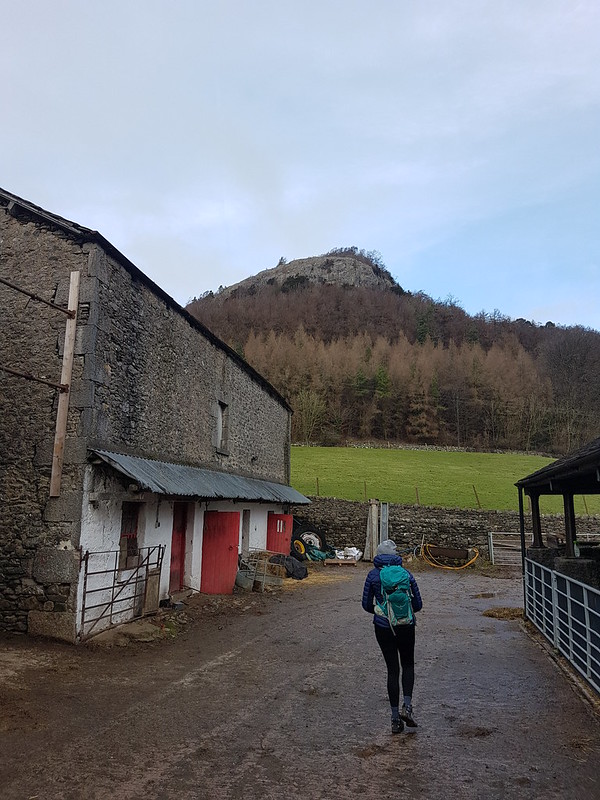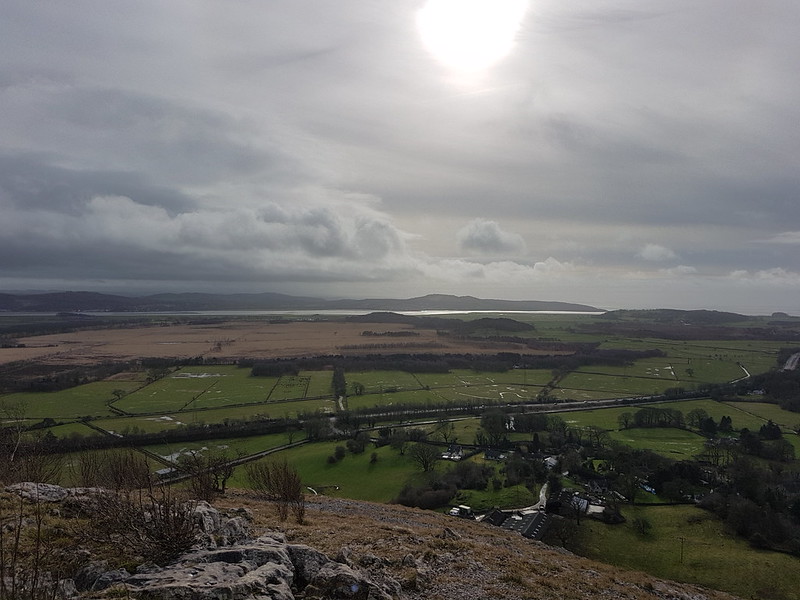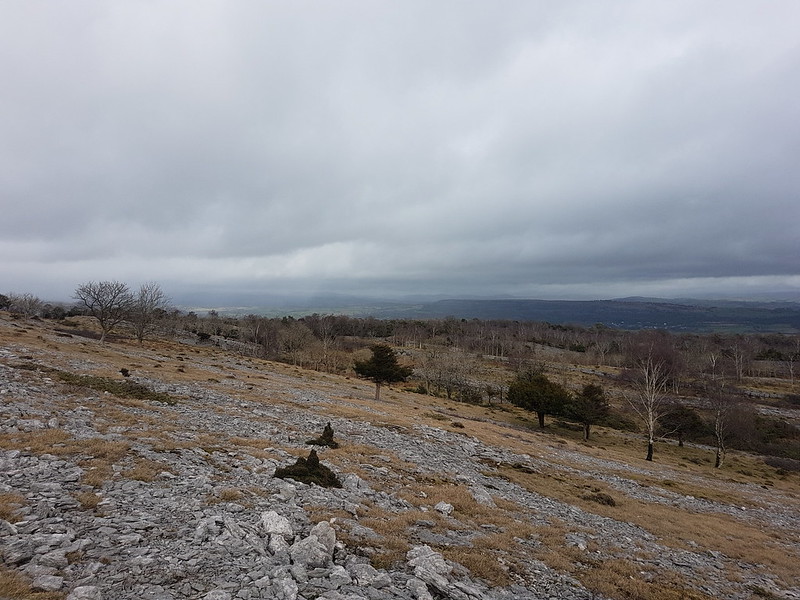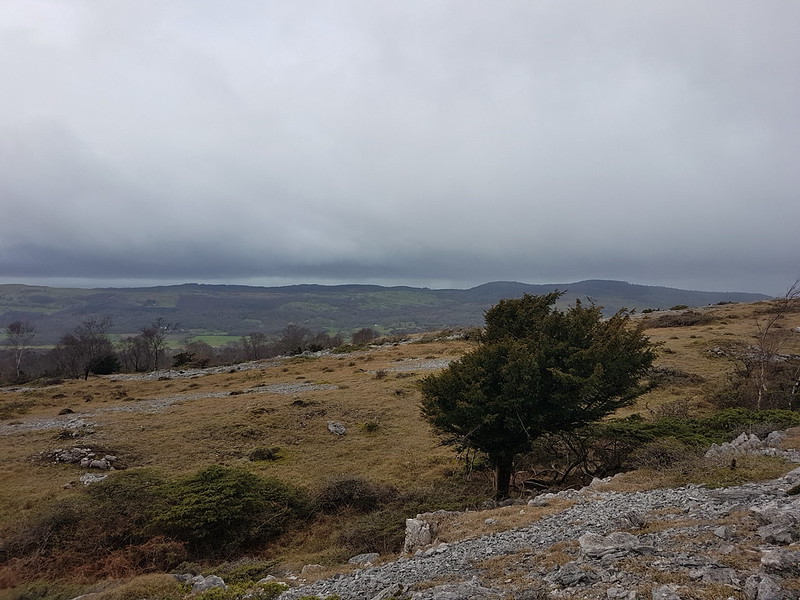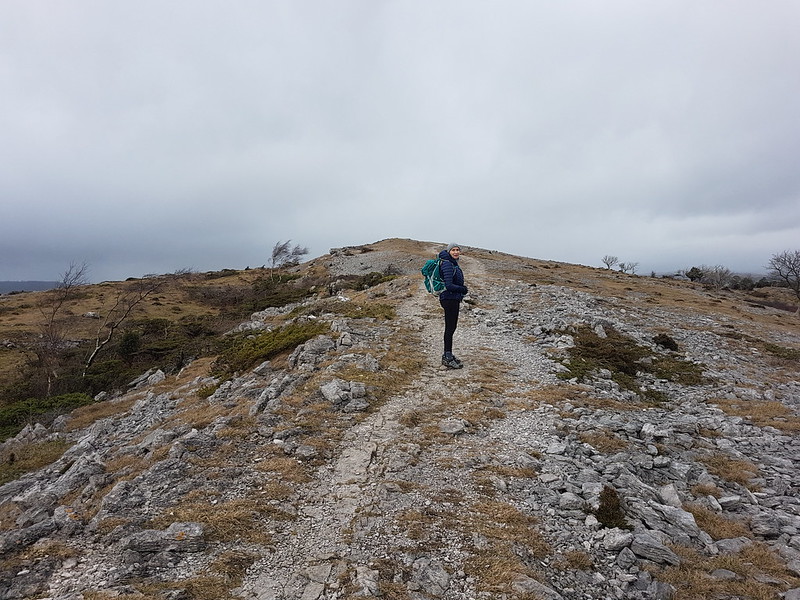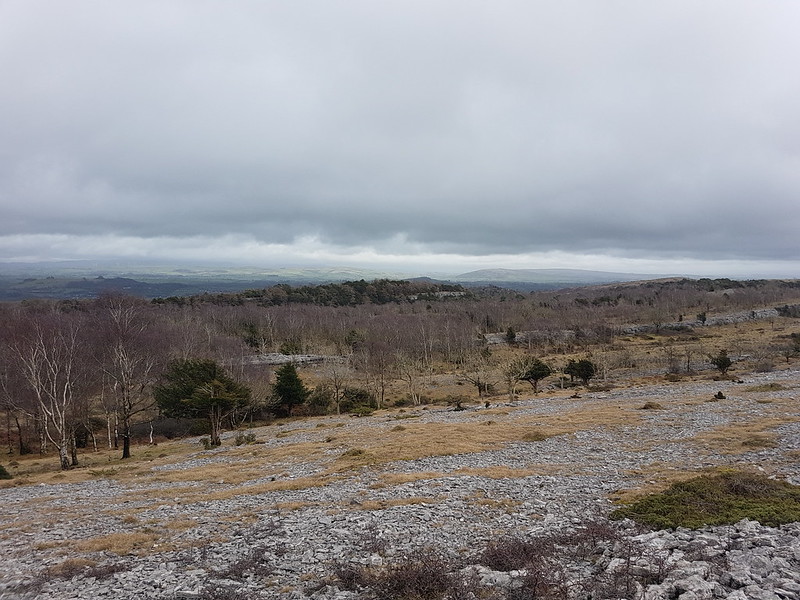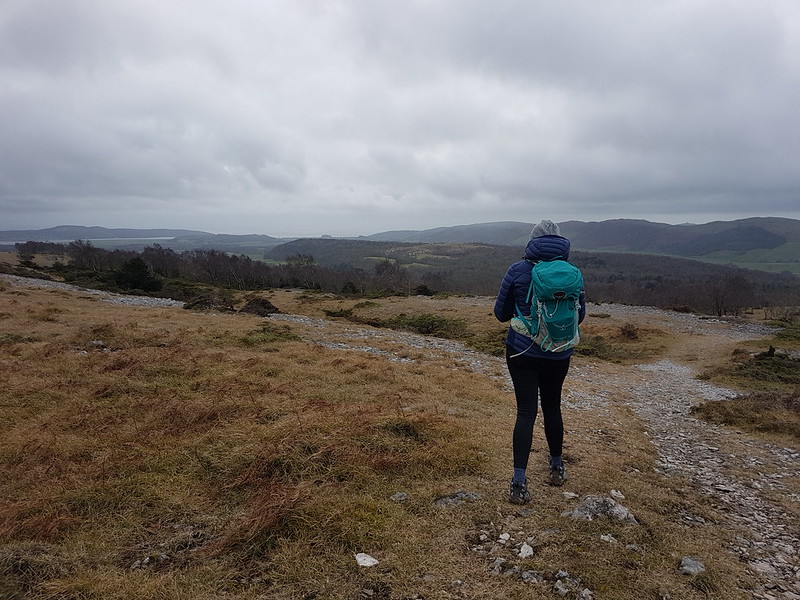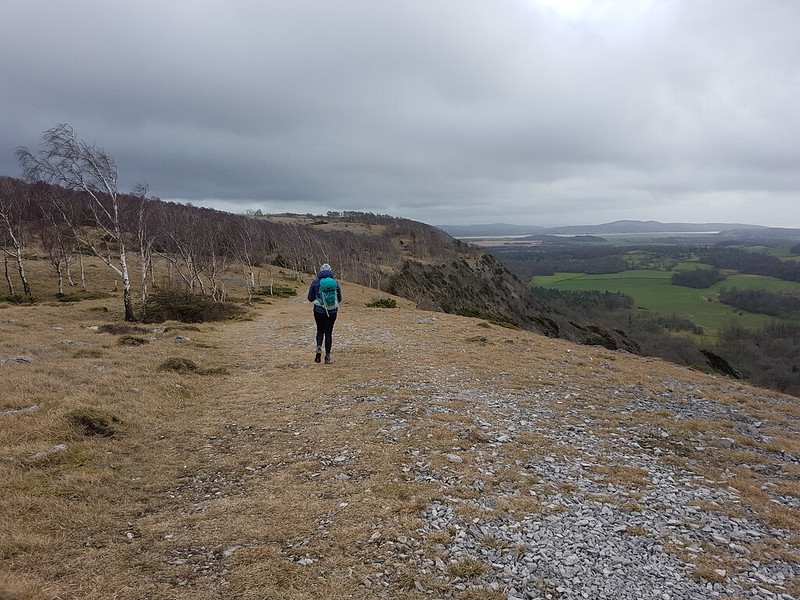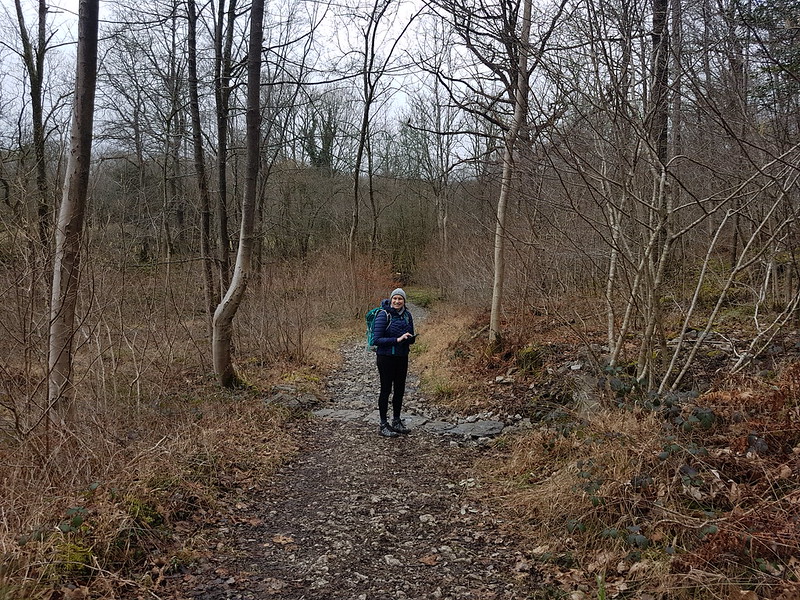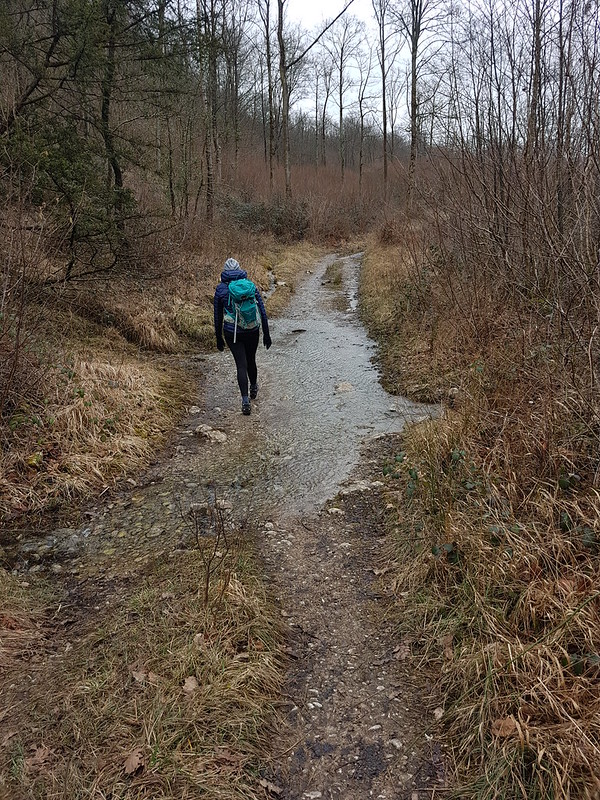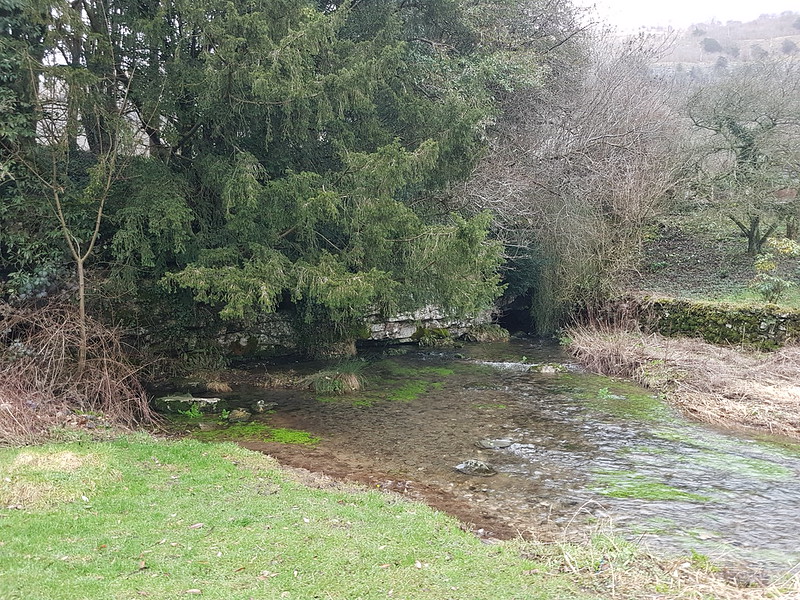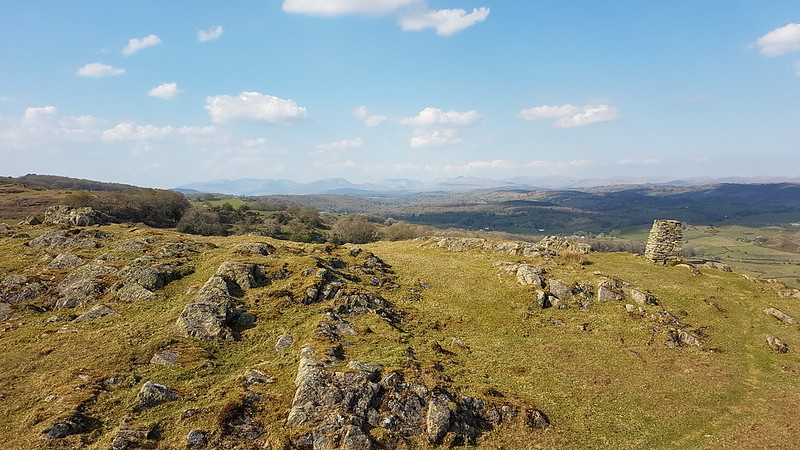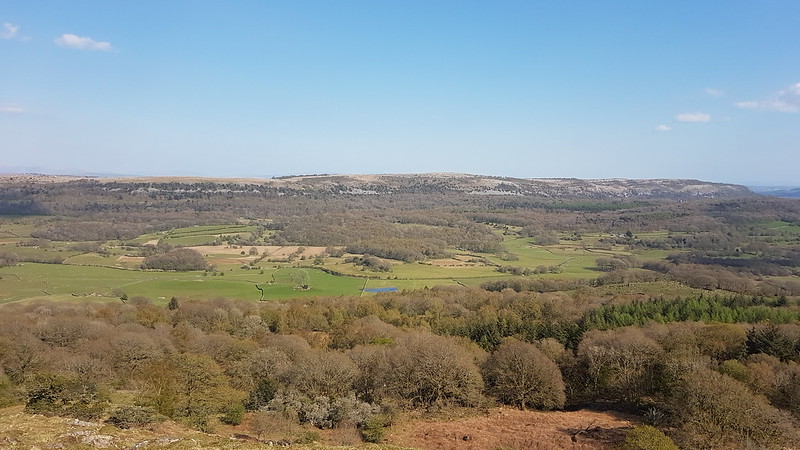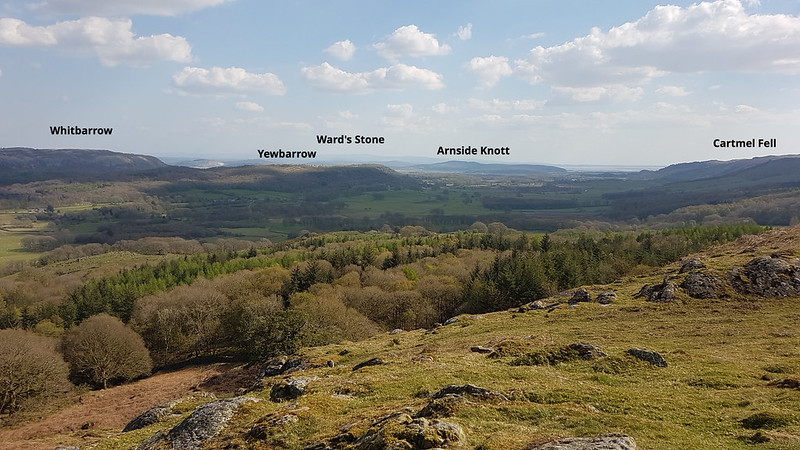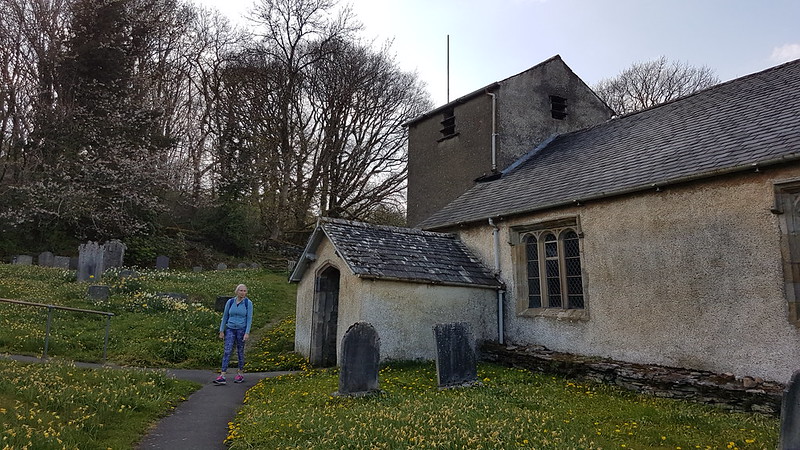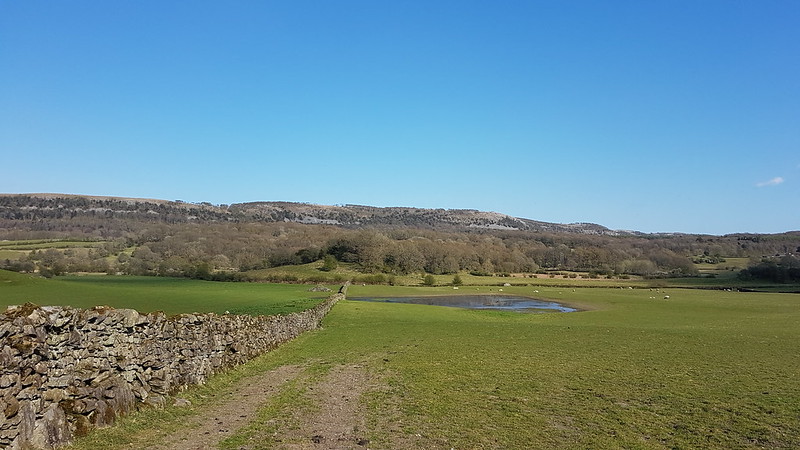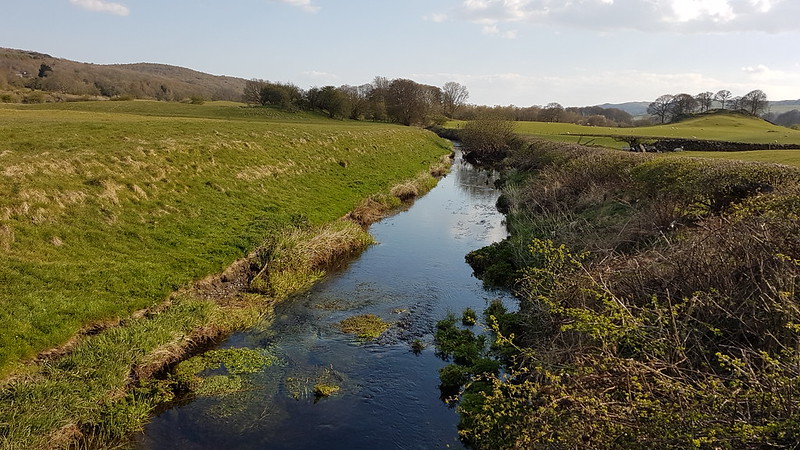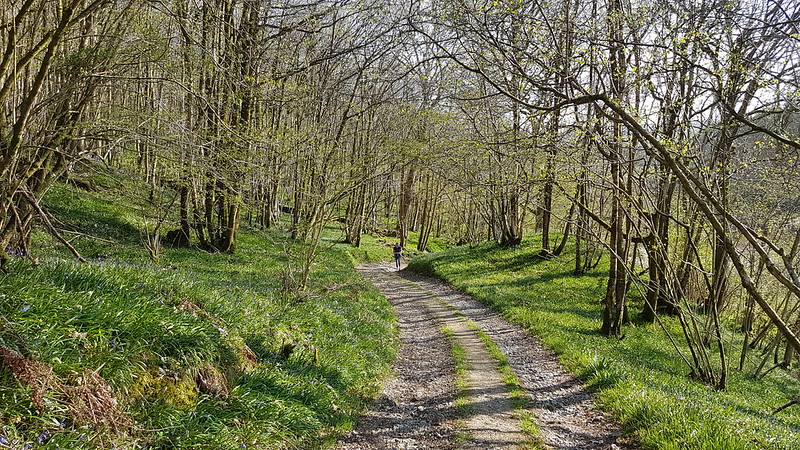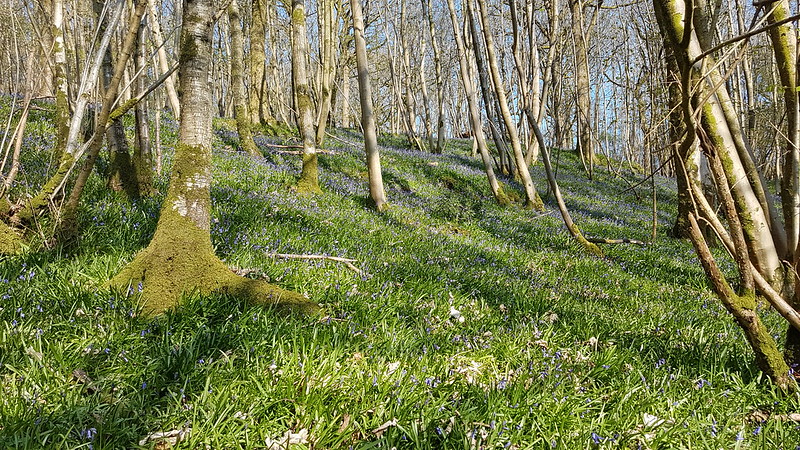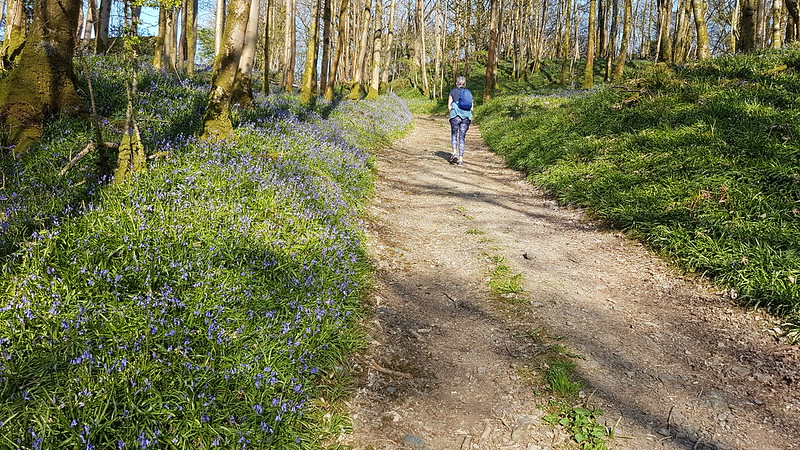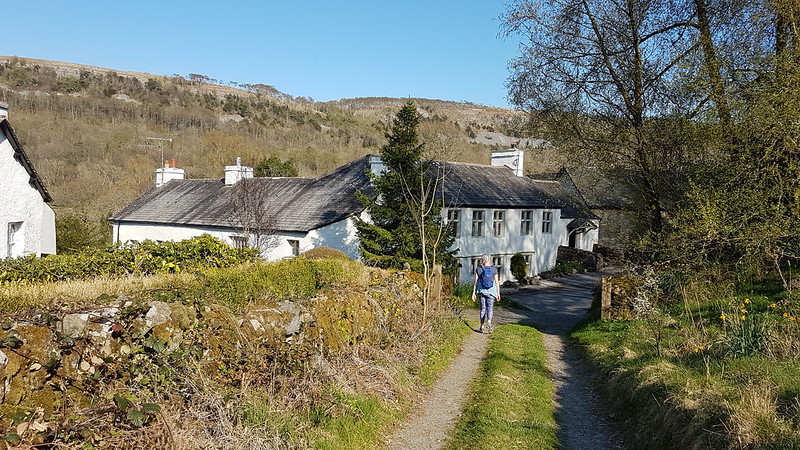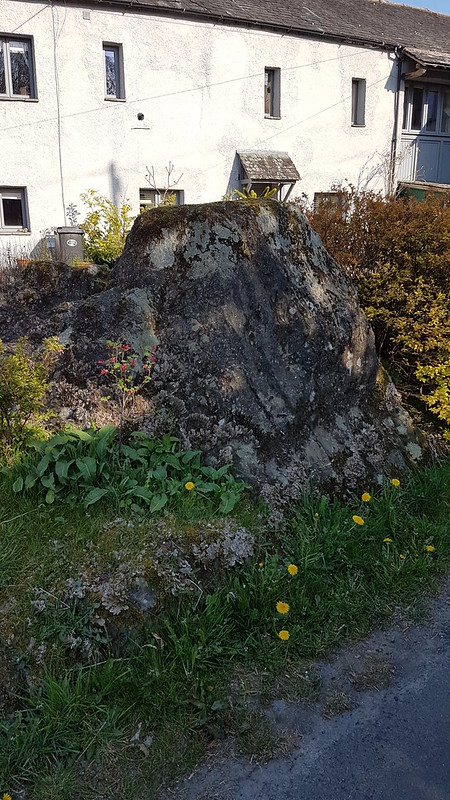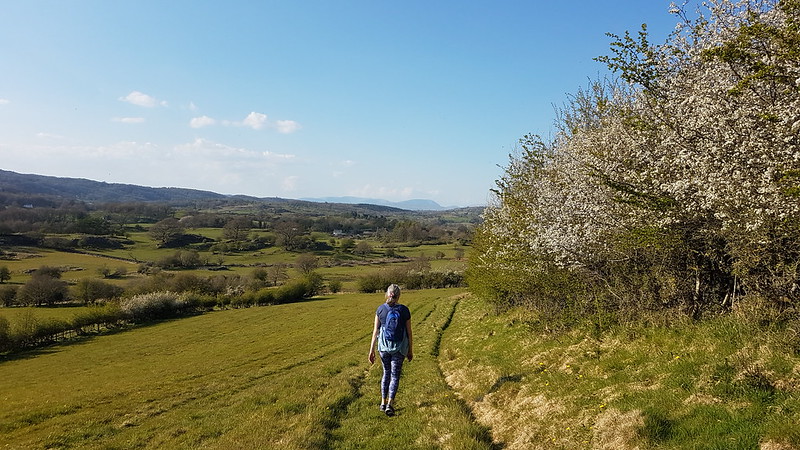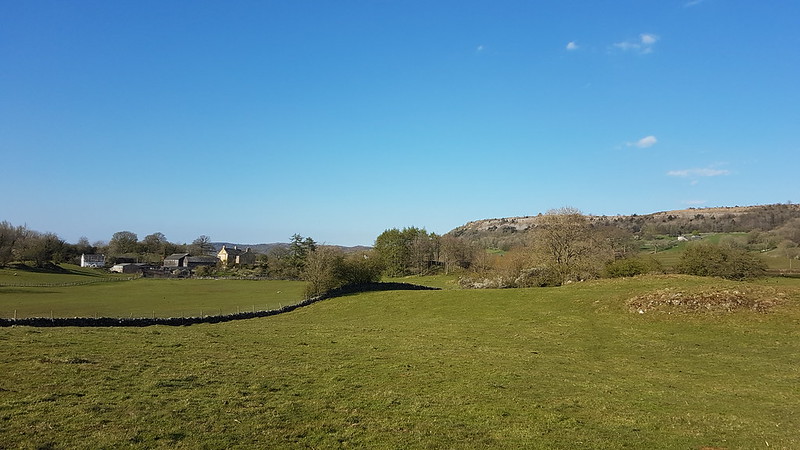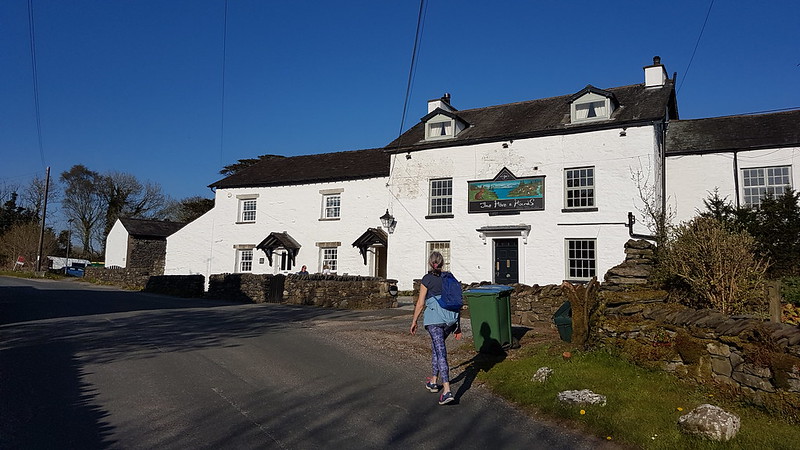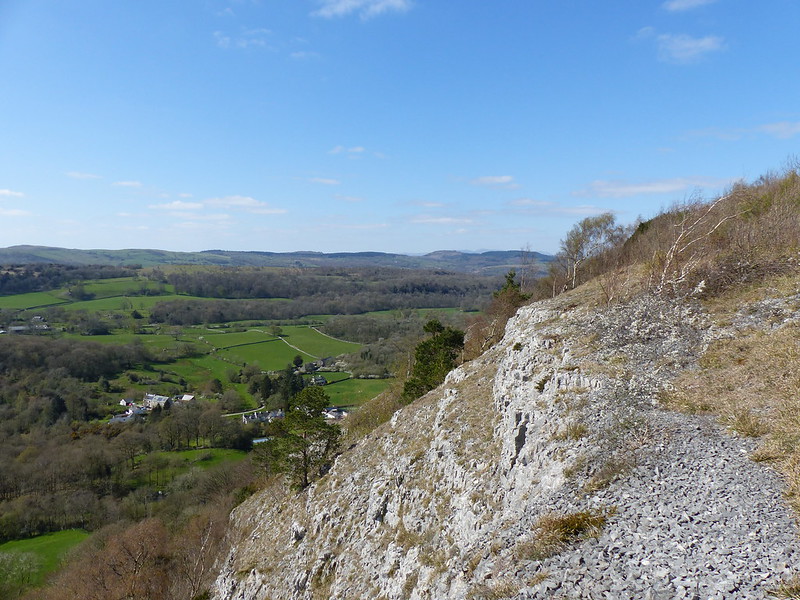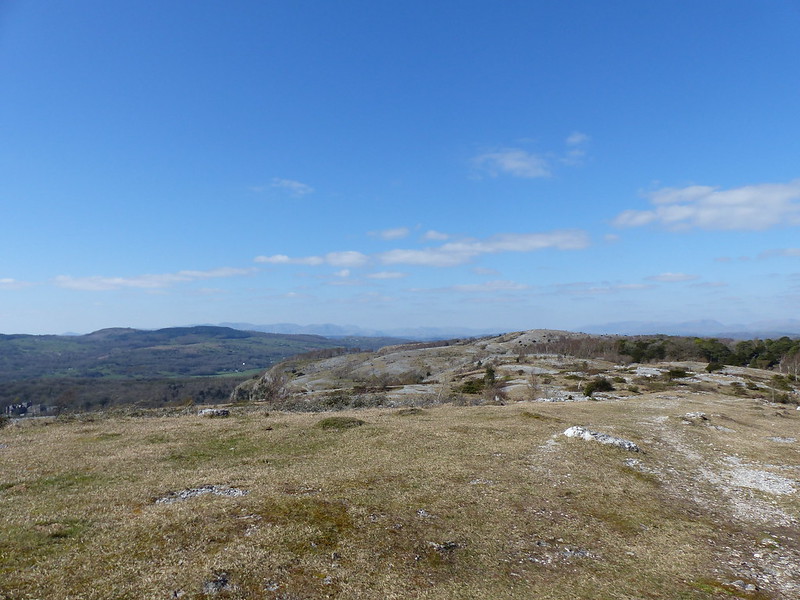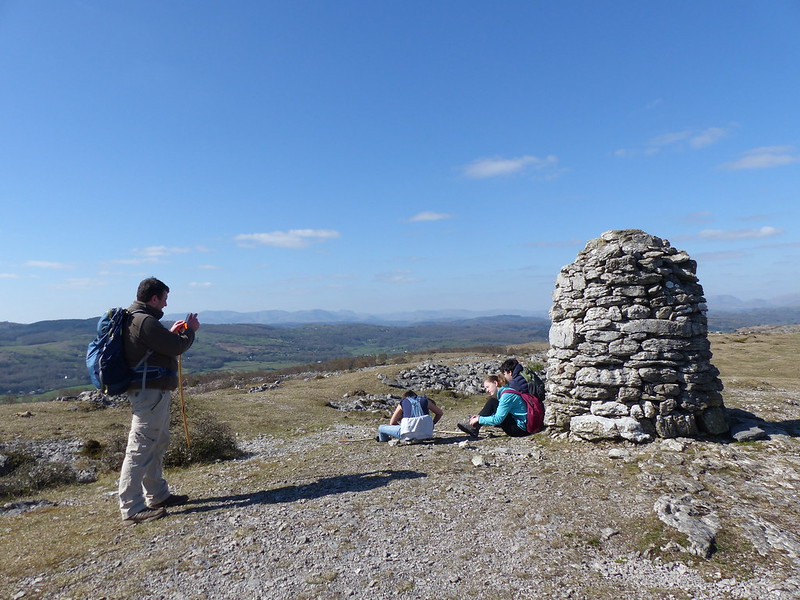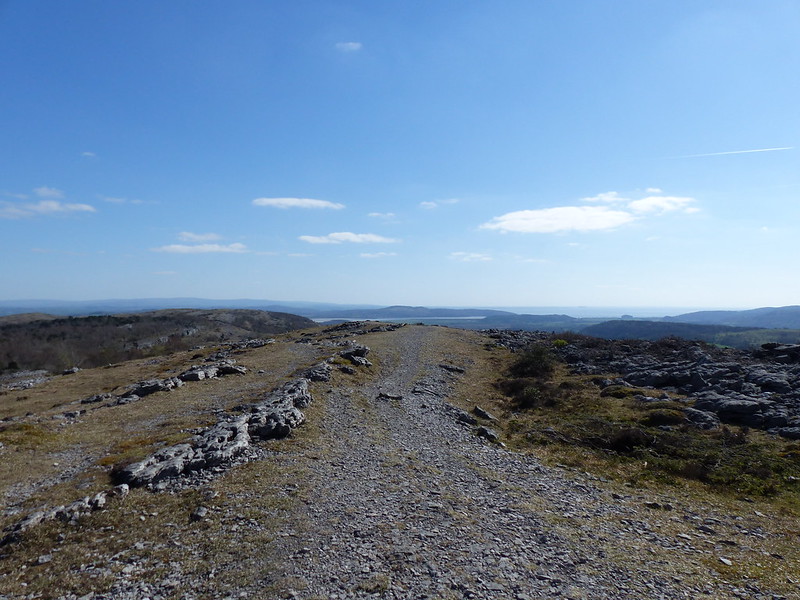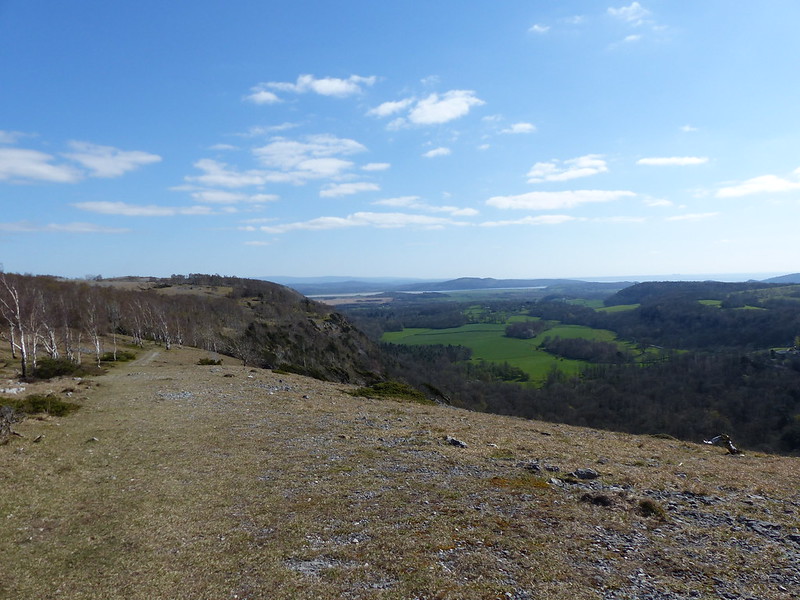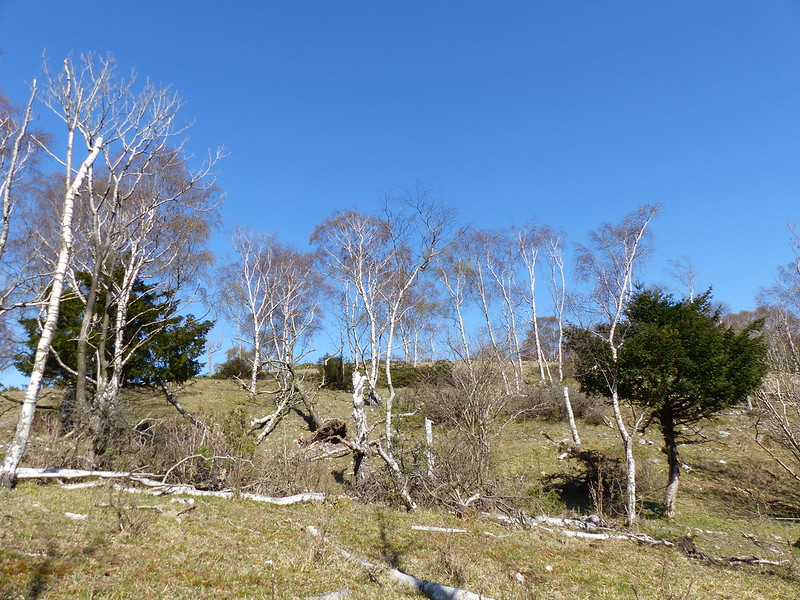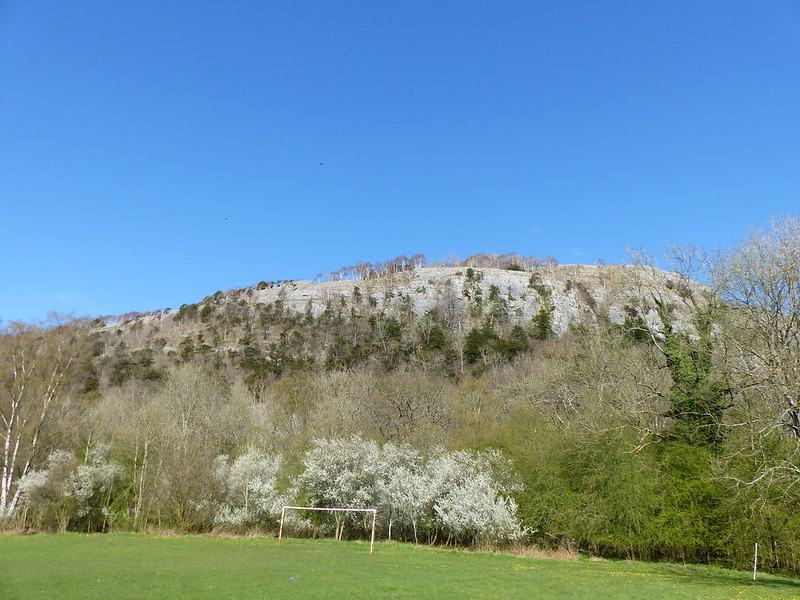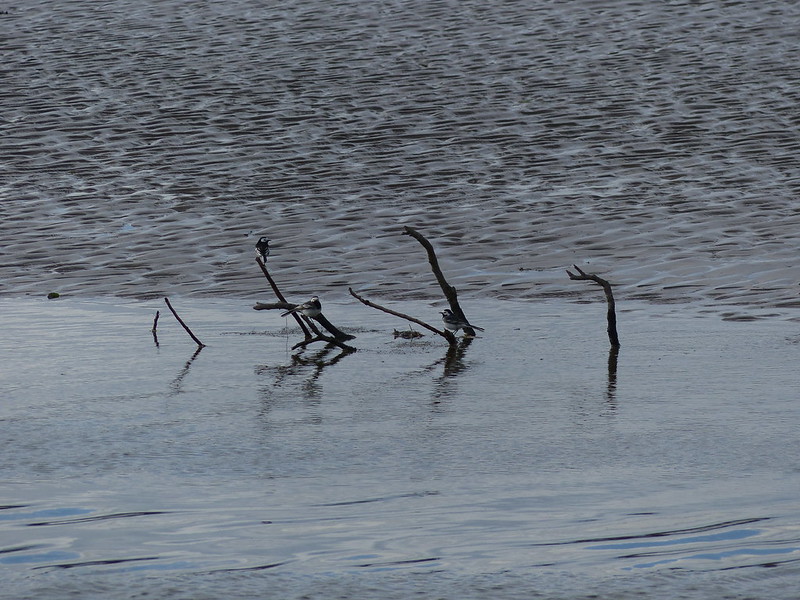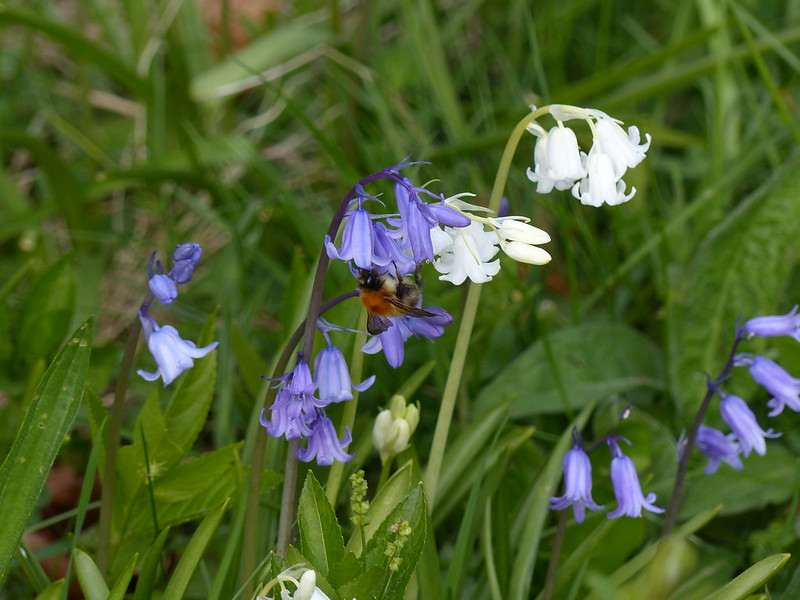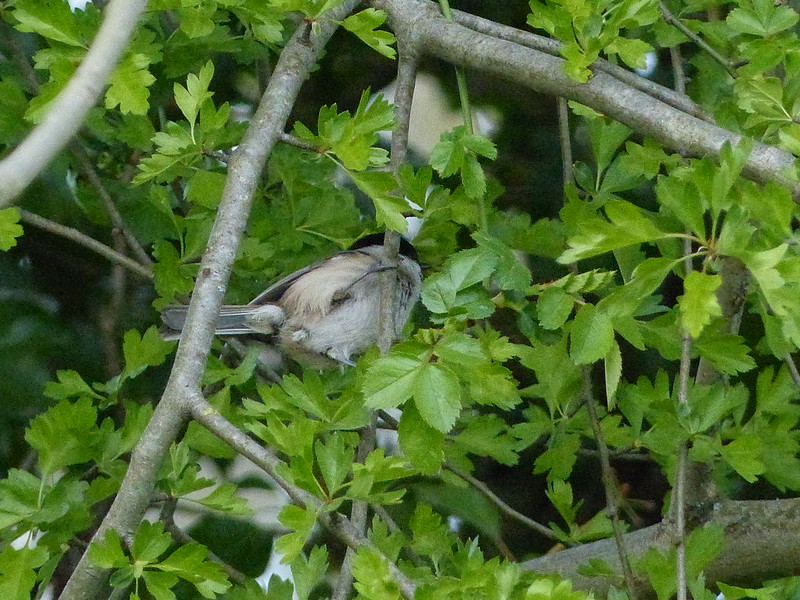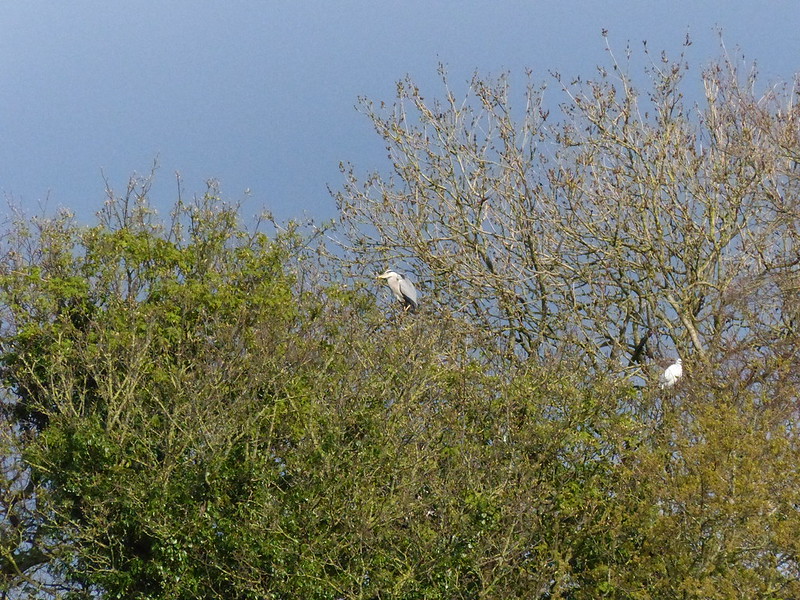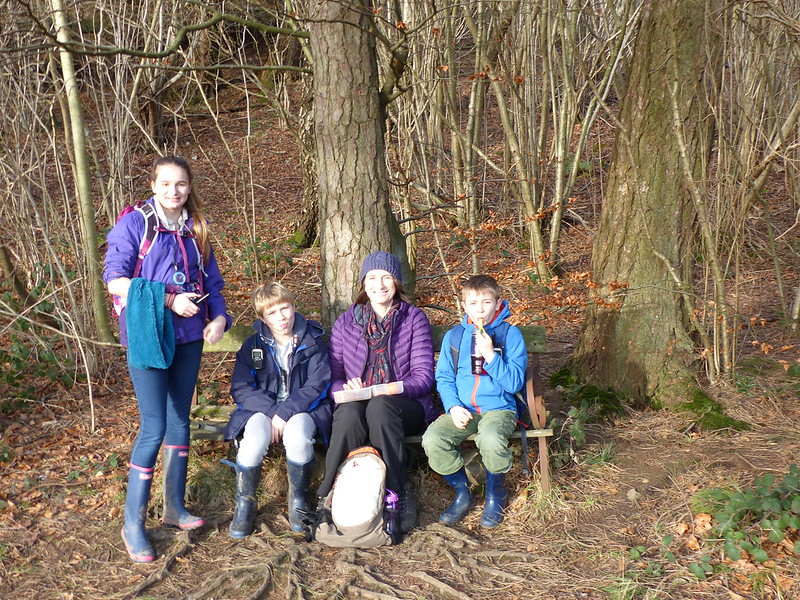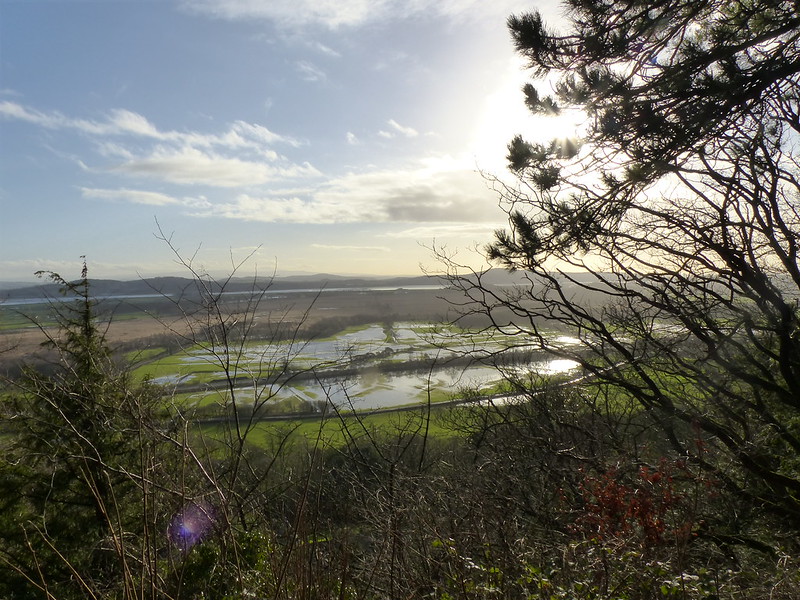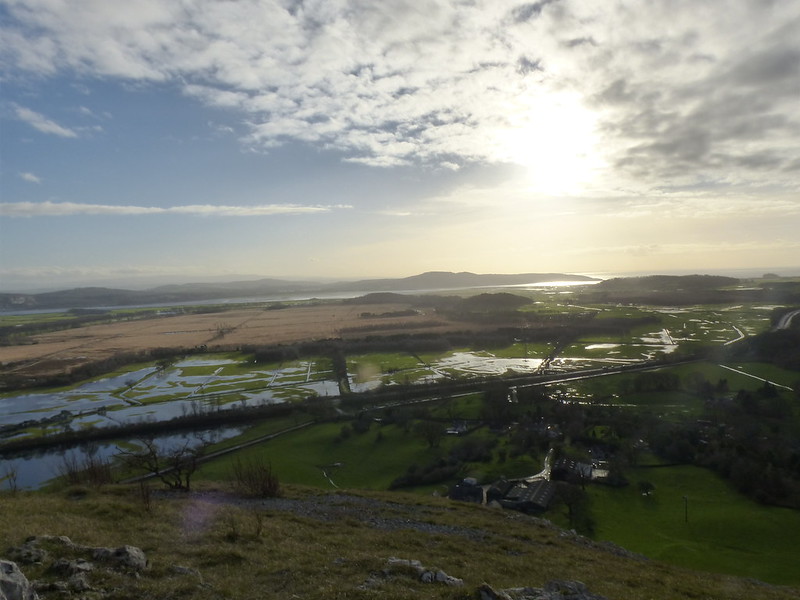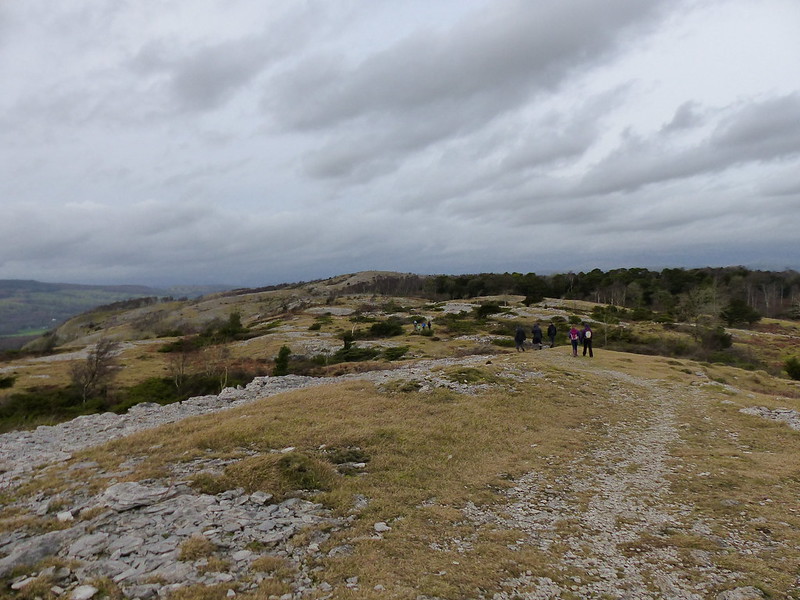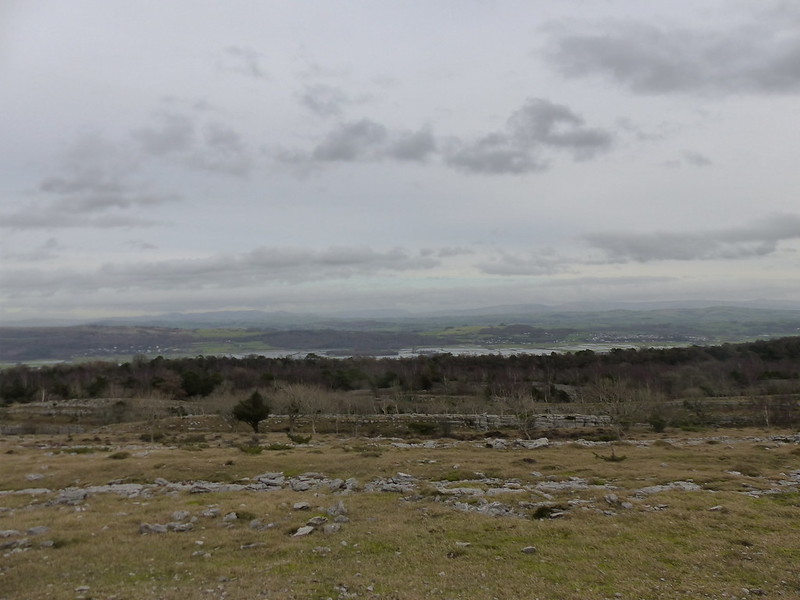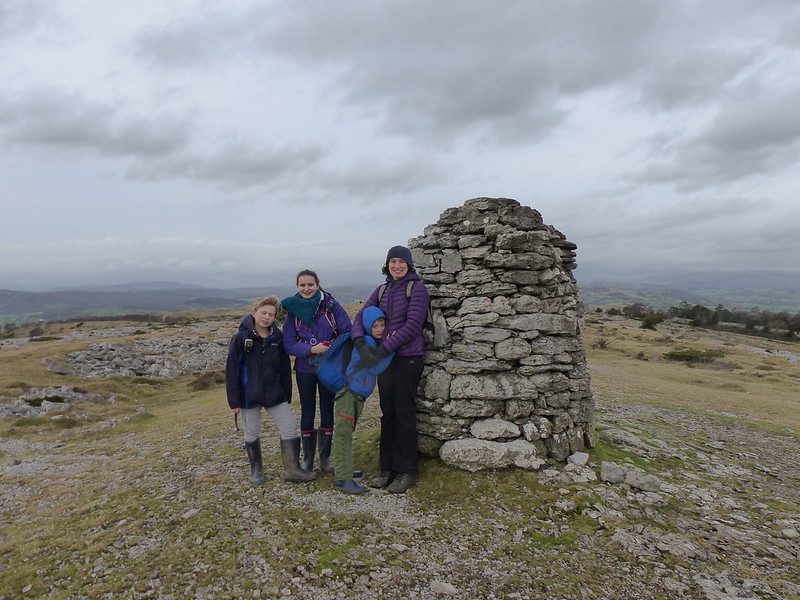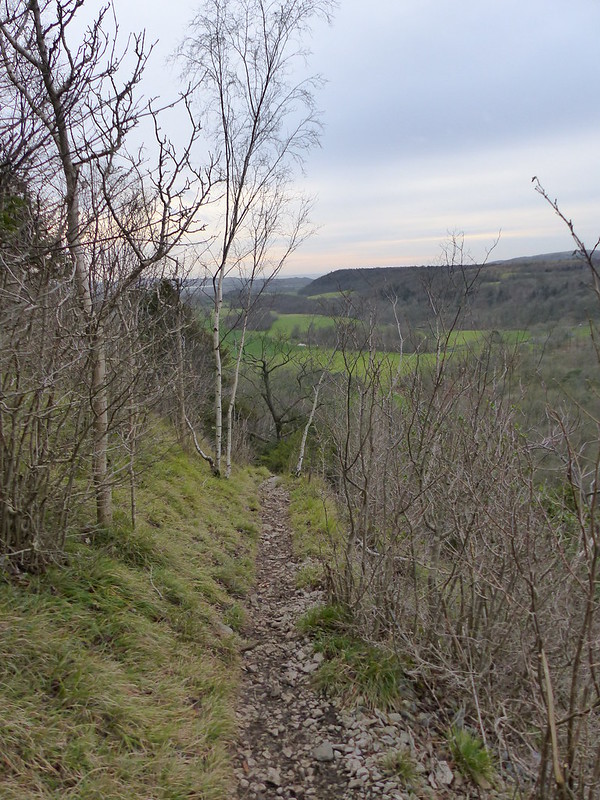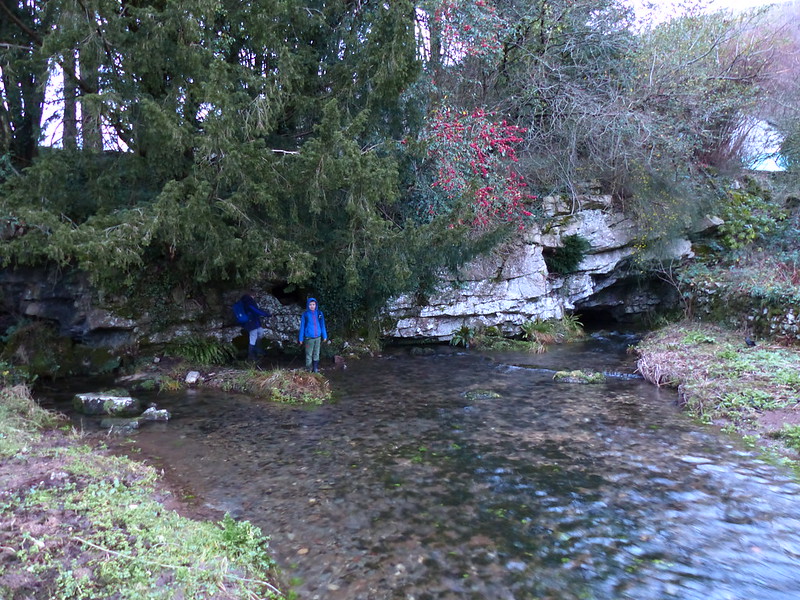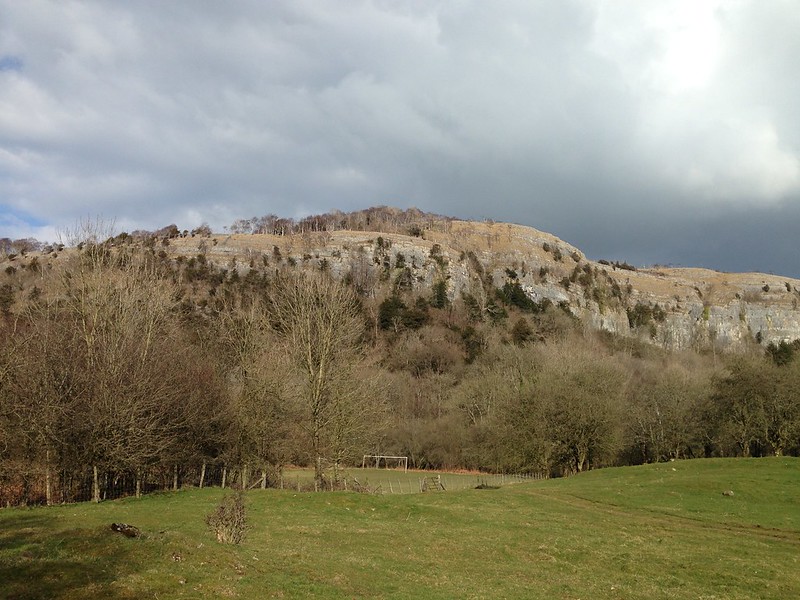
Chapel Head Scar.
The best-laid schemes o’ mice an’ men
Gang aft agley,
An’ lea’e us nought but grief an’ pain,
For promis’d joy!
Robert Burns from To a Mouse
Poor old Rabbie Burns obviously didn’t have a Plan B. Last year we decided that we would climb the three national highest peaks – Ben Nevis, Snowdon and Scafell Pike. We had a great day on the latter, but any plans we had for the other two went agley.

Farrer’s Allotment.
When Andy got wind of our plans he was keen to gatecrash them, which, of course, he was more than welcome to do. And so we hatched a scheme to head up to Lochaber this Easter to add The Ben to our tally. However, we were concerned about camping over such an early Easter weekend, especially when forecasters started to mention a further return of the Beast from the East.
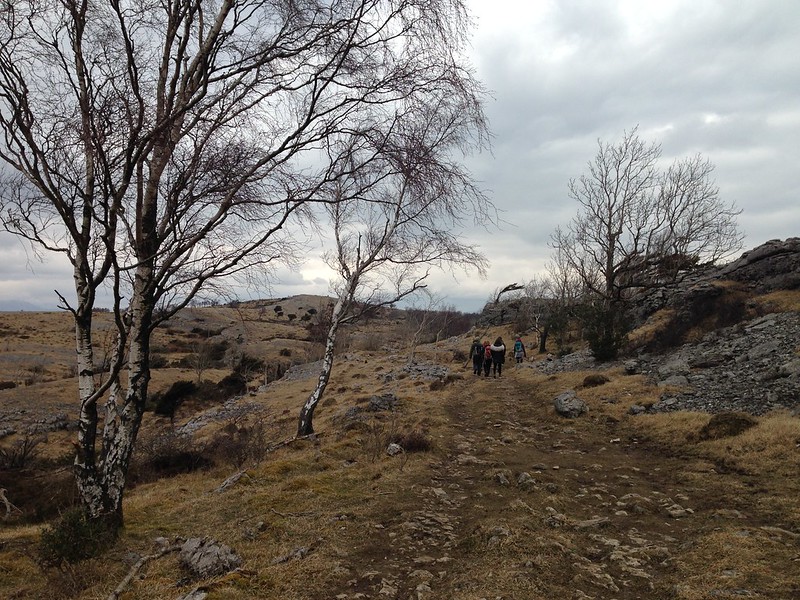
So, a back-up plan was needed. We decided that, if the forecast didn’t considerably improve, then the Surfnslide crew would head up to ours for the Bank Holiday weekend instead.

Thus it was that we parked on the old road parallel to the A590 close to Beck Head and then climbed through the steep woodland of Buckhouse Wood in a light rain. We hadn’t left the house very early (something of a theme when it comes to family outings, I know), so when we reached the plateau and the rain finally knocked off, we found a spot with an expansive, if somewhat gloomy, view for a brew and some lunch.
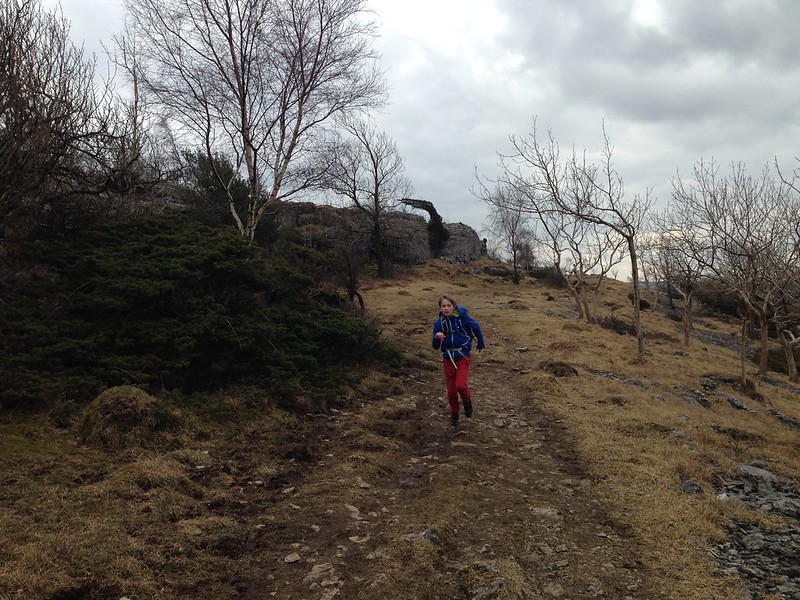
As ever, once out of the house, the DBs forgot to resent having been dragged away from their computer games and raced around looking for small crags to scale, of which there were plenty.
The substantial summit cairn at Lord’s Lot…

…also seemed to fit the bill as a small crag.
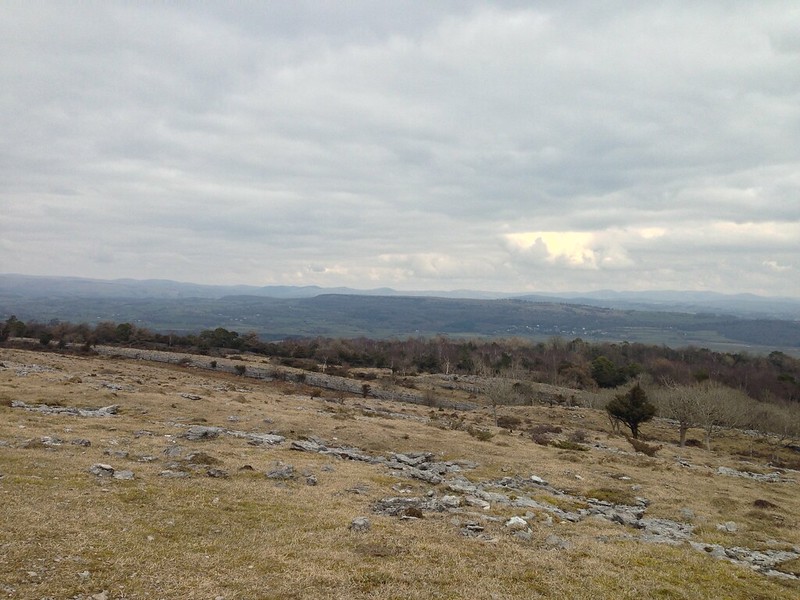
Scout Scar from Lord’s Lot.

Lord’s Lot panoramas. Click on any image to see a larger version on flickr.

Once the rain stopped the weather continued to brighten, eventually giving us a sunny afternoon in stark contrast to what had gone before.
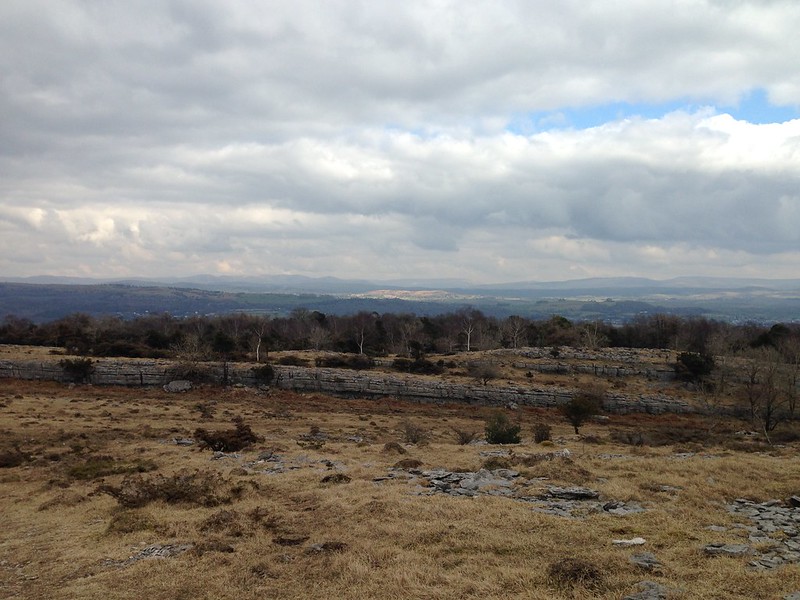
The Helm near Kendal catching the sun. I’ve never been up there, a very odd omission.
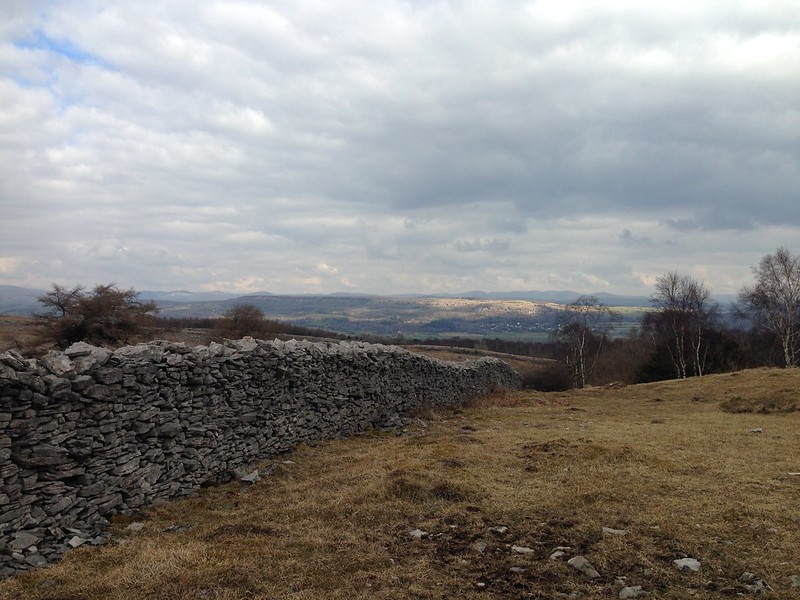
Scout Scar now catching the sun.
We decided to descend via Bell Rake, a route I haven’t followed for years. Beside the path we came across an old mine entrance, which I must have seen before, but have completely forgotten.
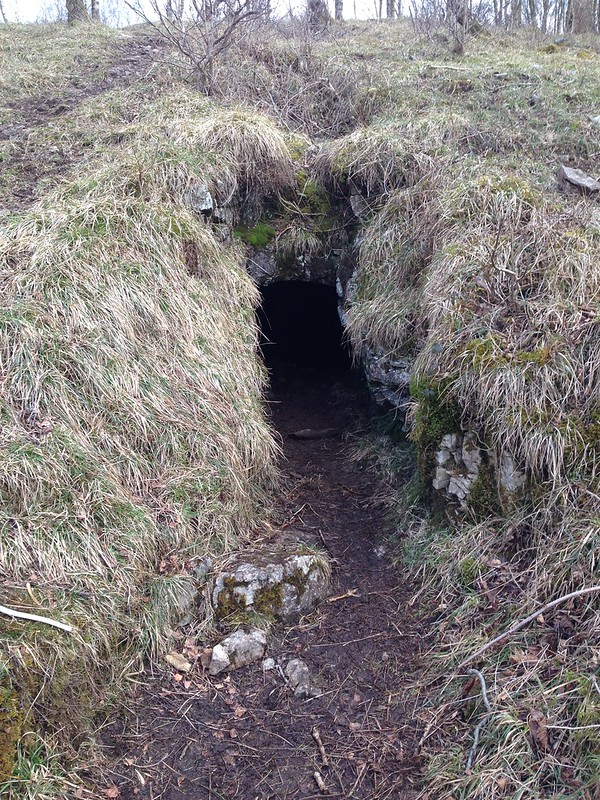
Our kids can never pass up an opportunity like this..

And had soon persuaded Andy to join them, he is, after all, an honorary DB.
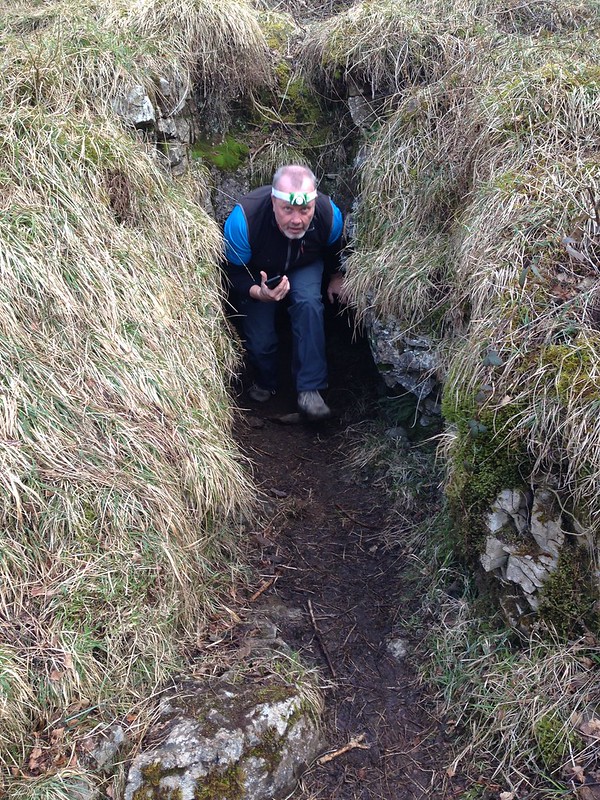
Apparently, after the low entrance it was possible to stand up and the passage went ‘quite a long way’ but was then a dead-end.
I was convinced that a bit of lazy internet research would unearth some details about the mine. I found a huge document, by Max Moseley of the Northern Mine Research Society which seems to have a lot about mining in this area, around Silverdale and Warton and which I shall peruse at some point. And also another file, this time a mineral reconnaissance report, commissioned by the Department of Industry.
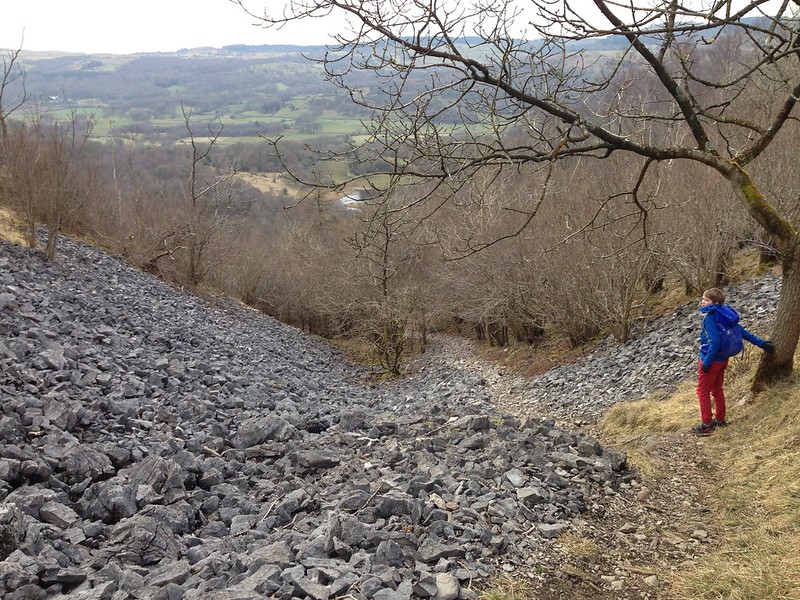
Spoil?
This one had what at first seemed like useful information.
DISCUSSION OF RESULTS
Area I (Whitbarrow and Brigsteer)
There are no exceptionally high levels of copper, lead, zinc, barium or manganese recorded in this area. Some of the highest values for these elements, particularly lead and zinc, are recorded on the east side of Whitbarrow, where field investigation identified a disused iron mine [SD 4370 87751]. At this locality (Bell Rake) a 0.5 m wide vein of calcite possibly with some baryte is seen in the roof of an old portal. This isolated vein strikes 140° and is vertical. This is possibily the locality described in a transcript dated 1616 quoted by Wildridge (1975).
“The other place called Whitbarrow Hills, where several dead leaders appear, with hingett and liggett. This hath not been wrought to such profile as were fit, but some further trial were made about it some 10 fathoms deep…… undoubtedly a vein will be found, which by the nature of the stone of these works we conceive will come a lead oare mixt with copper.”
No copper, lead or zinc minerals were seen either at outcrop or in mine dump material during a visit to this site. It is probable that this site was excavated in the belief that it was associated with a metal-containing lode vein.
But Bell Rake is on the west side, not the east, of Whitbarrow. The map reference is spot on however. Also, the passage seems to contradict itself: is it an iron mine as stated at the beginning or an exploratory level as suggested at the end? Perhaps, since no copper, lead or zinc ores were found, this site simply wasn’t very important in a mineral reconnaissance report?
Calcite is a crystalline form of Calcium Carbonate, whilst Baryte is a mineral form of Barium Sulphate and is associated with lead-zinc veins in limestones. I can’t figure out what hingett and liggett might be.
The steep path down from Bel Rake rapidly brought us High Park Wood.

The generally dry conditions underfoot came to an end here, which was no real surprise: previous experience suggests that this path, below the wonderfully named Black Yews Scar, is always fairly damp. I’m sure that I’ve read somewhere that the huge limestone plinth of Whitbarrow sits on a layer of Silurian slate, so that rainwater percolates down through the porous limestone and then rises to the surface as springs when it hits the slate.
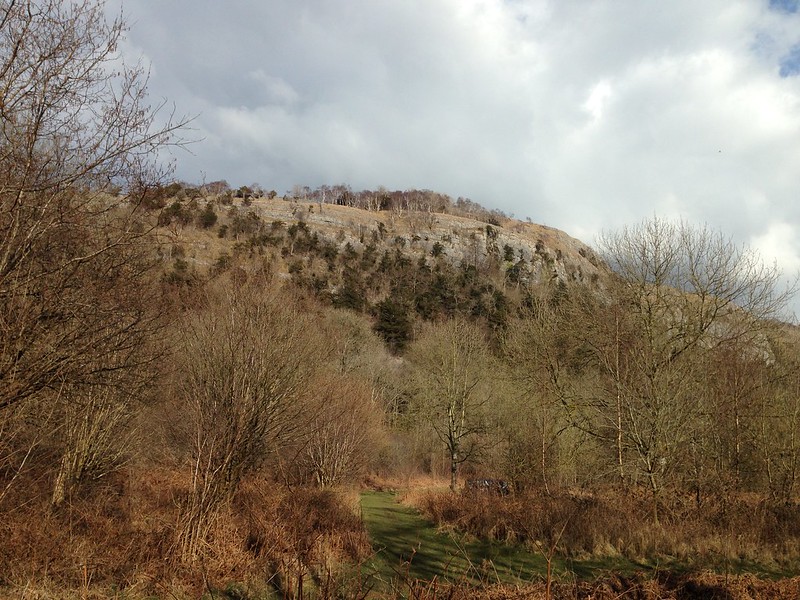
Chapel Head Scar.
Near Witherslack Hall, the path emerges from the woods, and with the sun shining, we now had superb views of the cliffs of Whitbarrow.
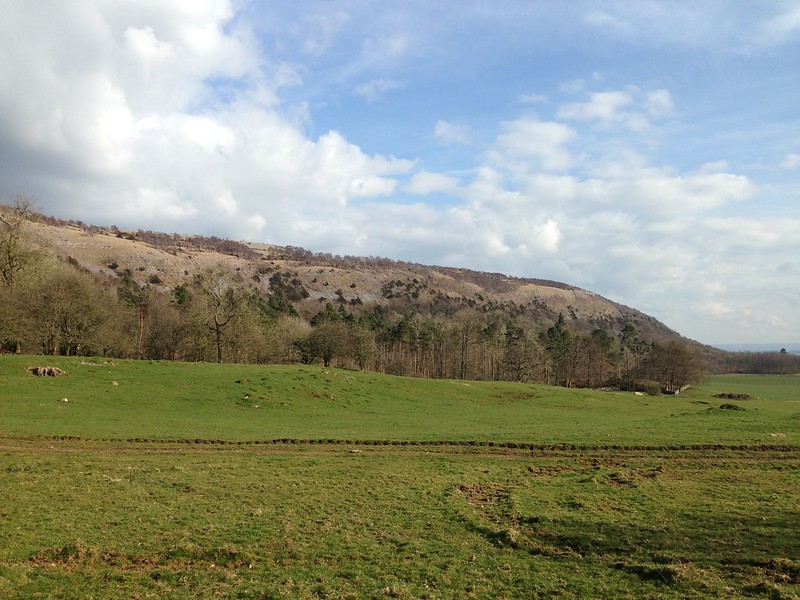

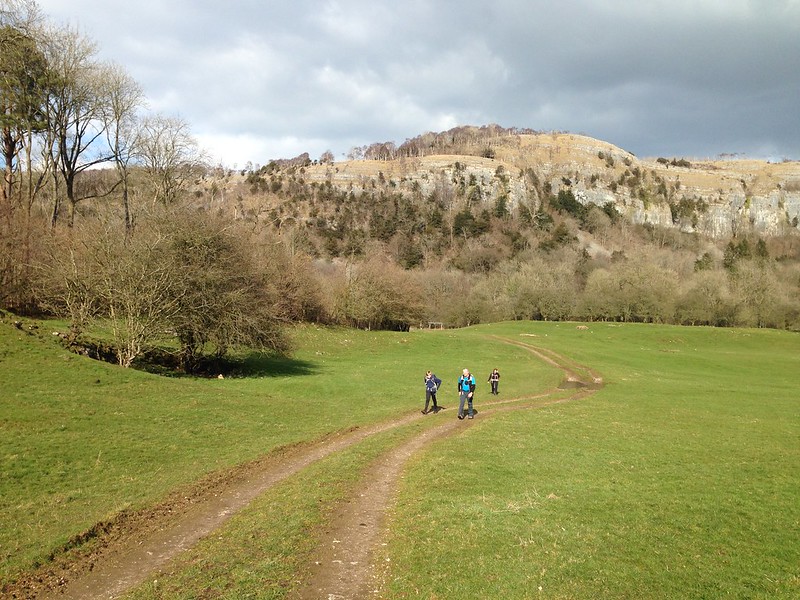

A short walk, first along the road and then on a track, brought us to the outskirts of the village of Beck Head.
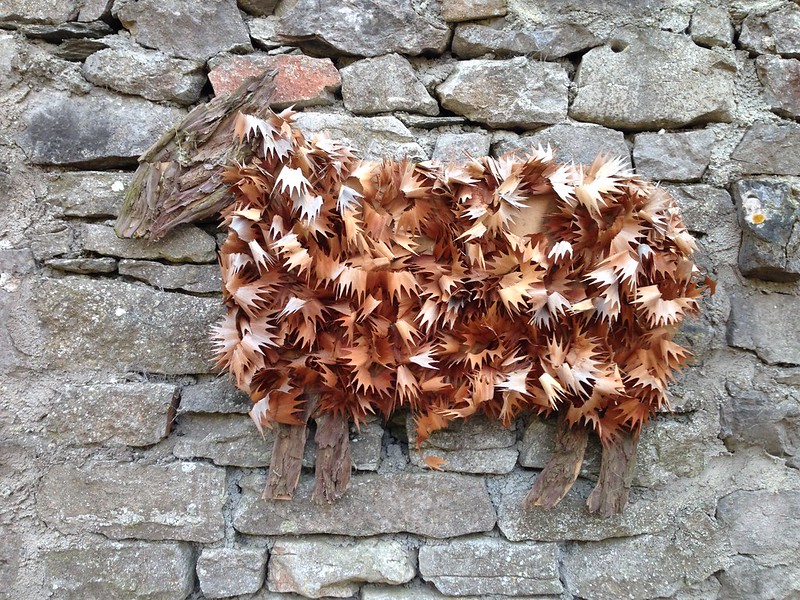
Artwork on the wall of the former Hikers’ Rest Cafe.
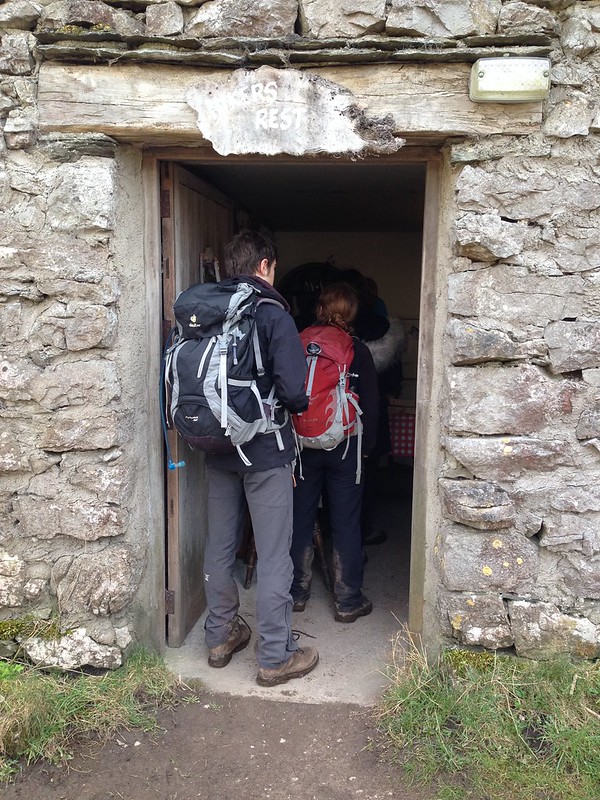
Sadly, the Hiker’s Rest Cafe there has had to close because it operated on an honesty box system, but people were not paying for what they took. What a shame.

At Beck Head there’s a particularly large and impressive spring. The boys managed to pick their way across the stream and where keen to explore another cave they could see. Time was marching on however and it was time to return to the cars and then home for some homemade pizzas and an evening of games.

Whitbarrow.
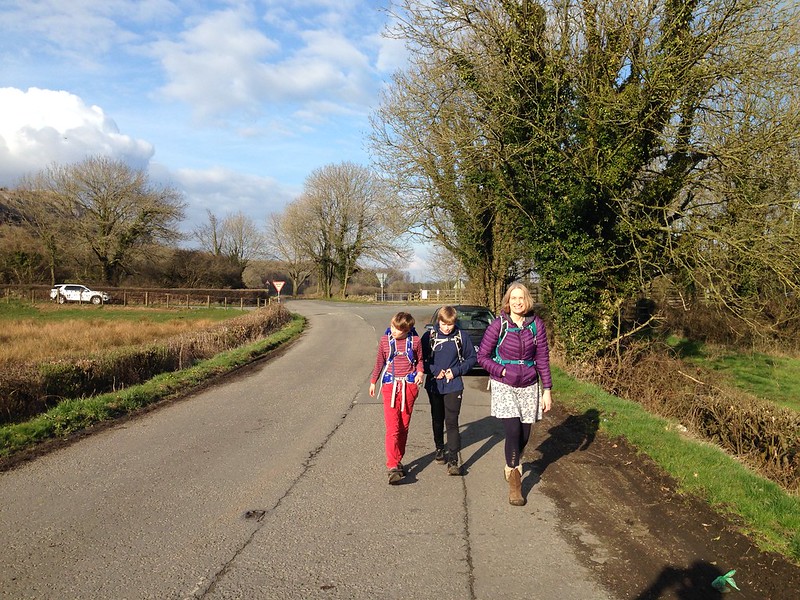
Back at the cars.
Burns rounds off ‘To a Mouse’…
Still thou art blest, compar’d wi’ me
The present only toucheth thee:
But, Och! I backward cast my e’e.
On prospects drear!
An’ forward, tho’ I canna see,
I guess an’ fear!
Poor chap. He needed to get some friends round; share a walk, some games, some simple food, a few laughs. It’s a foolprooof recipe for a happy weekend.
